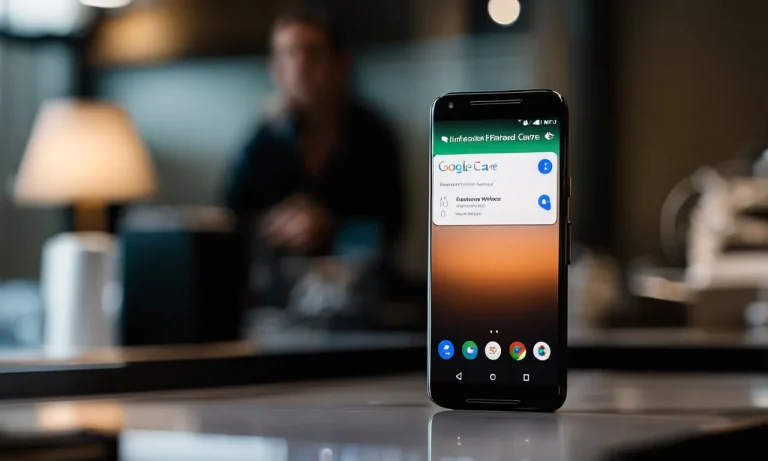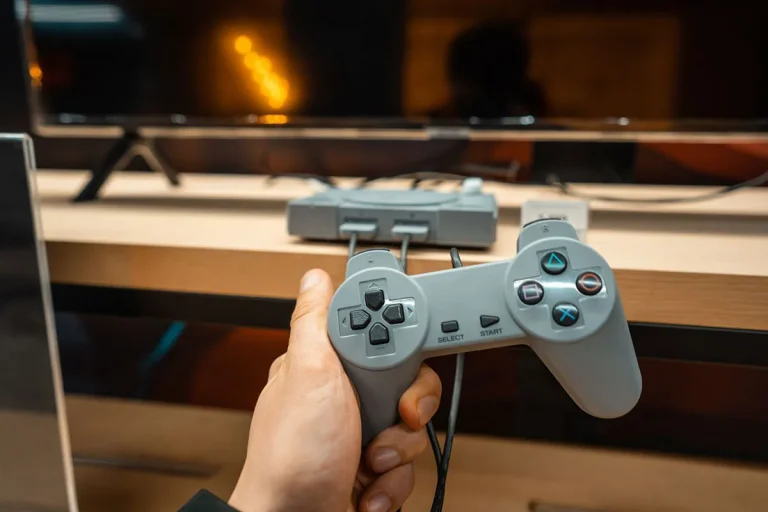How Much Is Ivory Worth? A Detailed Look At Ivory Prices And Value
Ivory has long been a coveted material, prized for its beauty, rarity, and association with exotic lands. From ancient Egyptian artisans to Chinese emperors, ivory has carried great prestige and has been in high demand. But how much is ivory actually worth today? What factors determine its value and price?
If you’re short on time, here’s a quick answer to your question: The price of ivory varies greatly based on the type, size, quality, and provenance of the ivory. Raw ivory can sell for $500 to $3,300 per pound. Carved ivory art and antiques can be worth tens or even hundreds of thousands of dollars for exceptional pieces.
A Brief History of Ivory
Ivory has a long and prestigious history dating back thousands of years. It has been highly sought after for its beauty, durability, and versatility, making it a valuable and prized material. The use of ivory can be traced back to ancient civilizations such as the Egyptians, Greeks, and Romans, who used it to create intricate carvings, jewelry, and decorative items. Ivory’s natural luster and ability to be intricately carved made it a symbol of wealth and status.
Ivory’s Prestigious History and Demand
The demand for ivory skyrocketed during the Renaissance period, where it became a symbol of luxury and power among the elite. Ivory sculptures, especially those created by renowned artists, were highly sought after and commanded high prices. European monarchs and nobles adorned their palaces and homes with ivory furniture, musical instruments, and exquisite artwork.
The demand for ivory continued to grow during the 18th and 19th centuries as global trade expanded. Ivory was used to create ornate piano keys, billiard balls, and handles for cutlery and walking sticks. The intricate craftsmanship and unique properties of ivory made it a preferred material for luxury goods.
The Impact of the Ivory Trade and Elephant Conservation
However, the popularity and demand for ivory came at a great cost to elephant populations. The ivory trade led to the widespread poaching of elephants, resulting in a significant decline in their numbers. According to the World Wildlife Fund (WWF), the elephant population has plummeted by 62% over the last decade due to poaching and habitat loss.
The devastating impact of the ivory trade on elephant populations led to a global outcry and efforts to protect these magnificent animals. In 1989, the Convention on International Trade in Endangered Species of Wild Fauna and Flora (CITES) implemented a worldwide ban on the commercial trade of ivory. This ban aimed to curb poaching and protect elephants from further exploitation.
Despite these efforts, the illegal ivory trade still persists today, driven by the demand for ivory in certain markets. This illicit trade poses a significant threat to elephant populations and undermines conservation efforts. Organizations such as the WWF and the International Fund for Animal Welfare (IFAW) continue to work tirelessly to combat the illegal ivory trade and protect elephants from extinction.
What Factors Determine Ivory’s Value?
When it comes to determining the value of ivory, there are several key factors that come into play. These factors can greatly influence the price and worth of ivory items. Let’s take a detailed look at the main factors that determine ivory’s value:
Type of Ivory
The type of ivory used in an item is a major factor in determining its value. The two most common types of ivory are elephant ivory and mammoth ivory. Elephant ivory is generally considered more valuable due to its rarity and the regulations surrounding its trade. Mammoth ivory, on the other hand, is derived from the tusks of extinct woolly mammoths and is often less expensive.
Size and Weight
The size and weight of an ivory item also play a significant role in determining its value. Generally, larger and heavier pieces of ivory are considered more valuable. This is because larger pieces can be used to create more intricate and detailed carvings, which are highly sought after by collectors and enthusiasts.
Quality and Craftsmanship
The quality and craftsmanship of an ivory item can greatly impact its value. Items that are skillfully carved with intricate designs and fine details are often considered more valuable than those with simpler designs. Additionally, the overall condition of the ivory, including any cracks or damage, can also affect its value.
Provenance and Significance
The provenance and significance of an ivory item can also influence its value. Items with a documented history or connection to a famous artist or historical event are often highly sought after by collectors. The provenance can add to the item’s value and make it more desirable to buyers.
Rarity and Availability
Last but not least, the rarity and availability of ivory can significantly impact its value. Ivory from endangered or protected species, such as African elephants, is highly regulated and can be difficult to obtain legally. This scarcity can drive up the price of ivory items. Conversely, ivory from more readily available sources, such as vintage ivory items, may be more affordable.
It’s important to note that the ethical and legal considerations surrounding the trade of ivory have led to stricter regulations and bans in many countries. It is crucial to research and understand the laws and regulations in your area before buying or selling any ivory items.
Ivory Prices for Raw Tusks and Carved Pieces
Raw Ivory Prices
Raw ivory refers to the unprocessed tusks of elephants or other animals. The price of raw ivory varies depending on factors such as the size, weight, and quality of the tusk. According to a report by the International Union for Conservation of Nature (IUCN), the average price of raw ivory in illegal markets is estimated to be around $1,500 per kilogram. However, it’s important to note that the trade and sale of raw ivory is illegal in many countries due to its impact on wildlife conservation efforts.
Antique and Vintage Carved Ivory Prices
Antique and vintage carved ivory pieces have a unique appeal to collectors and enthusiasts. The value of these pieces is influenced by factors such as age, craftsmanship, rarity, and historical significance. Prices can vary greatly depending on these factors. For example, a small antique ivory figurine from the 19th century can be priced at several hundred dollars, while a rare and intricately carved ivory artifact from ancient civilizations can fetch tens of thousands or even millions of dollars at auctions or specialized dealers.
Contemporary Carved Ivory Prices
Contemporary carved ivory pieces are those created by artisans in recent times. The price of contemporary carved ivory is influenced by factors such as the skill and reputation of the artist, the intricacy of the design, and the demand in the market.
The prices for these pieces can range from a few hundred dollars for small carvings to several thousand dollars for larger, more elaborate works. It’s worth noting that the sale of new ivory products is restricted or banned in many countries, as governments and organizations aim to combat the illegal trade and protect endangered species.
The Complexities of Selling Ivory Today
Selling ivory in today’s world is a complex and highly regulated process. The trade in ivory has been heavily restricted due to concerns over conservation and animal welfare. Governments around the world have implemented strict laws to protect elephants and other endangered species from poaching and illegal trade. As a result, anyone looking to sell ivory needs to navigate a web of legal restrictions, ethical concerns, and industry practices.
Legal Restrictions on Ivory Sales
There are international regulations in place to control and monitor the sale of ivory. The Convention on International Trade in Endangered Species of Wild Fauna and Flora (CITES) is an international agreement that regulates the trade of endangered species, including ivory. CITES has banned the international trade in ivory since 1989, with a few limited exceptions. However, each country may have its own laws and regulations regarding the sale of ivory, so it’s crucial to understand the specific rules in your jurisdiction.
In some countries, like the United States, there is a near-total ban on the sale of ivory, with limited exceptions for certain antique items. Other countries have implemented stricter regulations, such as a complete ban on all ivory sales. It is important to research and comply with these regulations to avoid legal trouble and contribute to the conservation efforts.
Ethical Concerns Around Ivory
One of the main reasons for the strict regulations on ivory sales is the ethical concerns surrounding the ivory trade. Elephants are highly intelligent and social animals, and they are often subjected to cruel and inhumane treatment in the process of obtaining their ivory. Poaching for ivory has decimated elephant populations across Africa and Asia, pushing them towards the brink of extinction.
Furthermore, the illegal ivory trade is often linked to organized crime and the funding of armed groups. The profits from ivory sales can fuel conflicts and destabilize regions. By participating in the legal ivory trade, there is a risk of indirectly supporting these illicit activities.
Appraisals, Auctions, and Dealers
If you are considering selling your ivory, it is essential to have it appraised by a qualified professional. They will assess the quality, age, and authenticity of the ivory, which will determine its value in the market. Reputable auction houses and dealers often have experts who can provide accurate appraisals.
When selling ivory, it is crucial to choose a reputable dealer or auction house that adheres to the legal and ethical standards. They should have a transparent process for verifying the legality and provenance of the ivory they handle. By working with trustworthy professionals, you can ensure that your ivory is being sold in a responsible and lawful manner.
It’s important to note that the value of ivory has significantly decreased over the years due to the legal restrictions and public awareness campaigns against its trade. While ivory was once considered a symbol of wealth and status, it is now increasingly seen as a controversial and unethical material.
Caring for and Insuring Your Ivory
When it comes to owning ivory, proper care and maintenance are crucial to preserve its value and ensure its longevity. Additionally, it is essential to have the right insurance coverage to protect your investment. In this section, we will discuss the importance of proper storage and handling, getting appraisals and valuations, as well as insuring high-value ivory.
Proper Storage and Handling
One of the key factors in maintaining the value of your ivory is proper storage and handling. Ivory is a delicate material that can be easily damaged if not handled with care. It is recommended to keep your ivory pieces in a temperature-controlled environment with regulated humidity levels. Extreme temperature fluctuations and high humidity can cause the ivory to crack or warp.
When handling your ivory, always make sure your hands are clean and free from any oils or lotions. Oils and residues can penetrate the surface of the ivory and cause discoloration or staining. Using soft, lint-free cloths or gloves when handling your ivory can also help prevent any accidental scratches or damage.
Getting Appraisals and Valuations
To accurately determine the value of your ivory, it is crucial to get professional appraisals and valuations from reputable experts in the field. These experts have the knowledge and experience to assess the quality, rarity, and historical significance of your ivory pieces.
When seeking an appraisal, be sure to choose a qualified appraiser who specializes in ivory. They will be able to provide you with an unbiased evaluation and an estimated value based on current market trends. It is also worth noting that ivory prices can fluctuate over time, so it is recommended to have your pieces re-evaluated periodically to ensure you have the most accurate valuation.
Insuring High-Value Ivory
Given the high value of certain ivory pieces, insuring them is a wise decision to protect your investment. Ivory can be susceptible to theft, accidental damage, or loss, and having the right insurance coverage can give you peace of mind.
When insuring high-value ivory, it is essential to choose a specialized insurance provider that understands the unique nature of ivory and its value in the market. They will be able to tailor a policy that adequately covers your specific needs and provides appropriate coverage limits.
It is also recommended to keep detailed records, including photographs and descriptions of your ivory pieces, as this documentation can be crucial in the event of a claim. Additionally, consider having your pieces professionally appraised and providing the appraisal report to your insurance company to ensure accurate coverage.
Remember, caring for and insuring your ivory not only protects your investment but also helps preserve these beautiful and historically significant pieces for generations to come.
Conclusion
Determining ivory’s worth involves many factors, from ivory type to craftsmanship to ethical issues around its trade. While raw ivory can sell for hundreds of dollars per pound, exceptional antique carved pieces can be valued at six or seven figures. Understanding ivory prices provides insight into this precious material that has been coveted for centuries and continues to carry great value, rarity and prestige today.
Though opaque and complex, the ivory market provides a window into humanity’s long fascination with this storied material. Its value reflects not just monetary worth but ivory’s enduring appeal and the timeless awe it evokes as an object of beauty, artistry and status.








